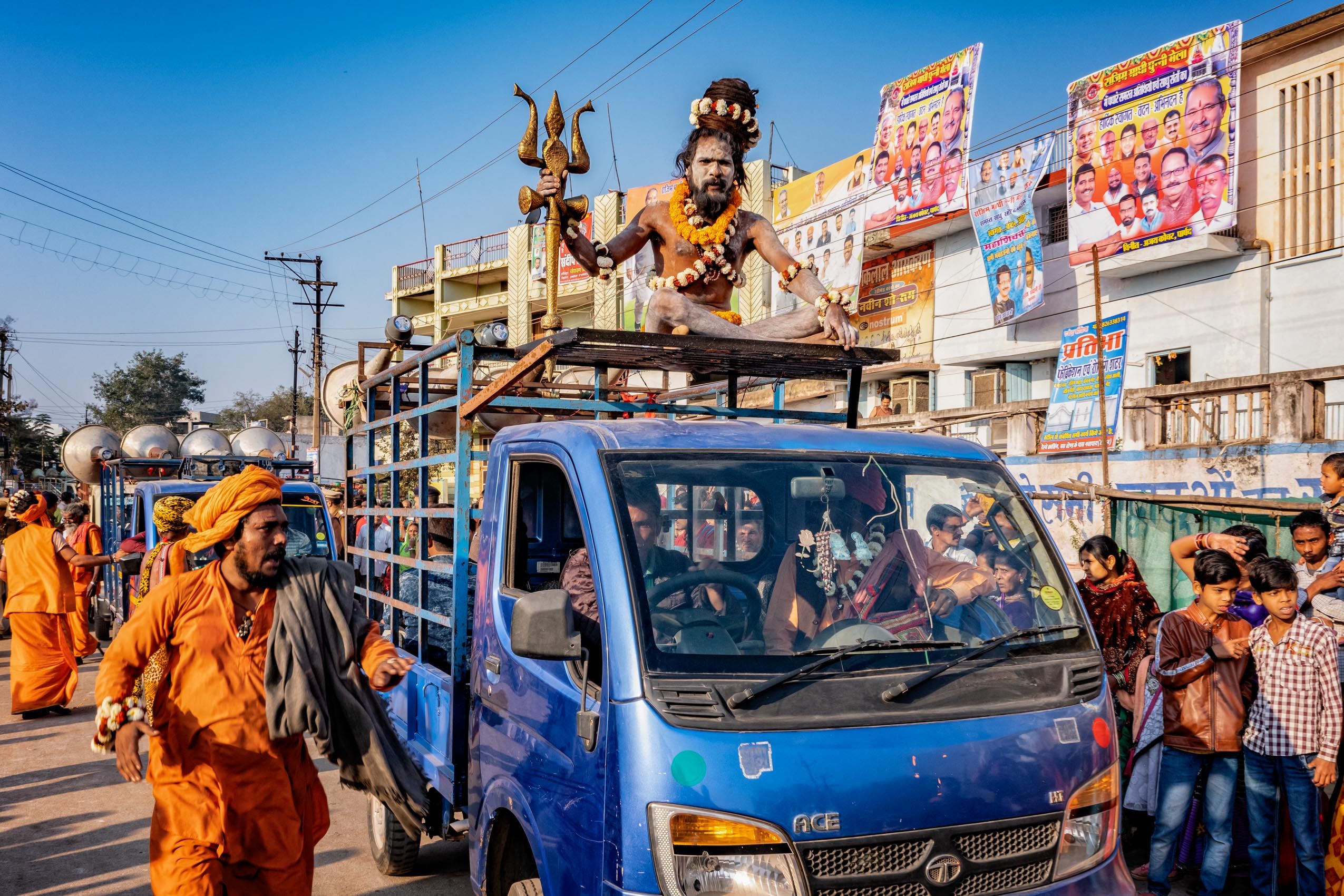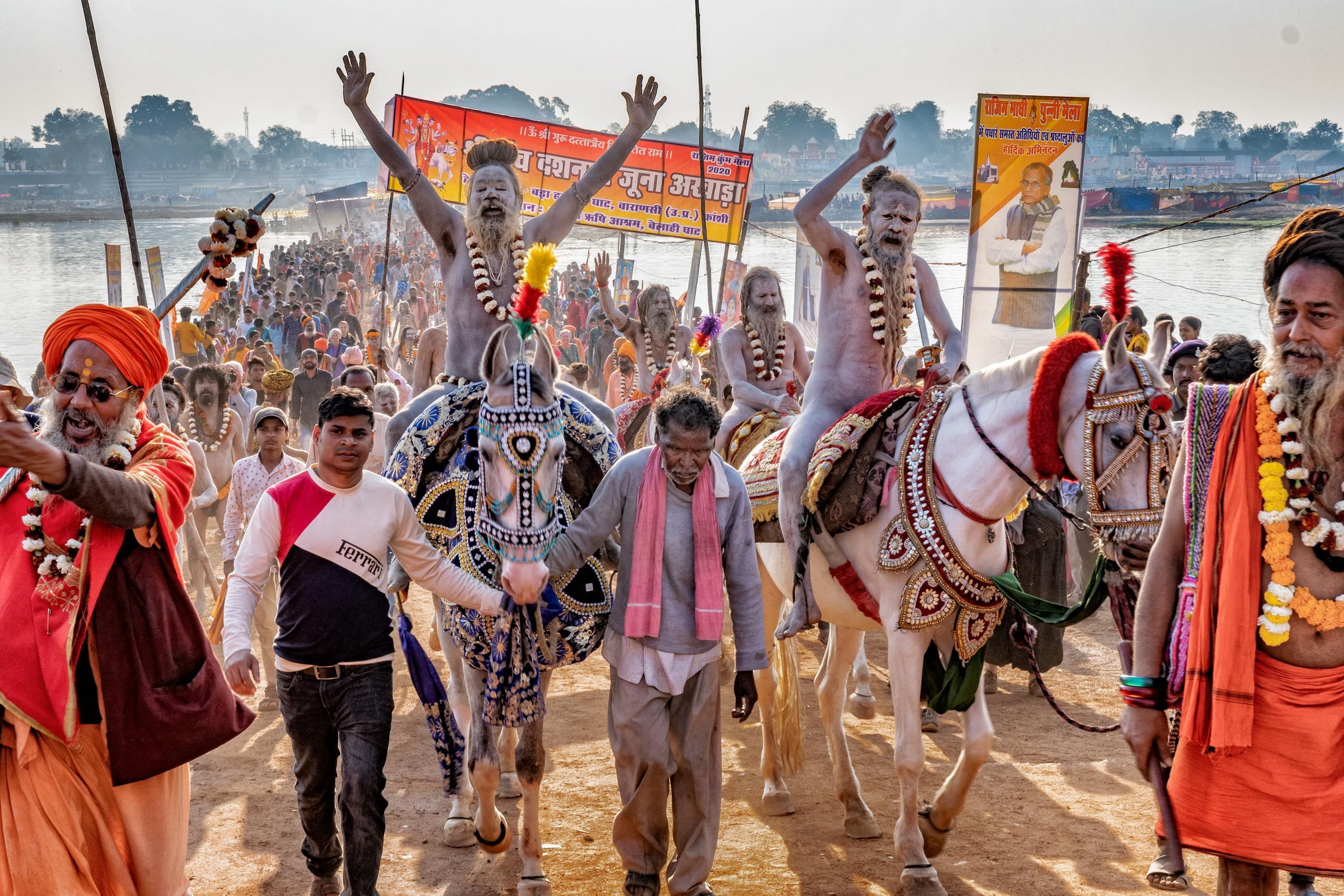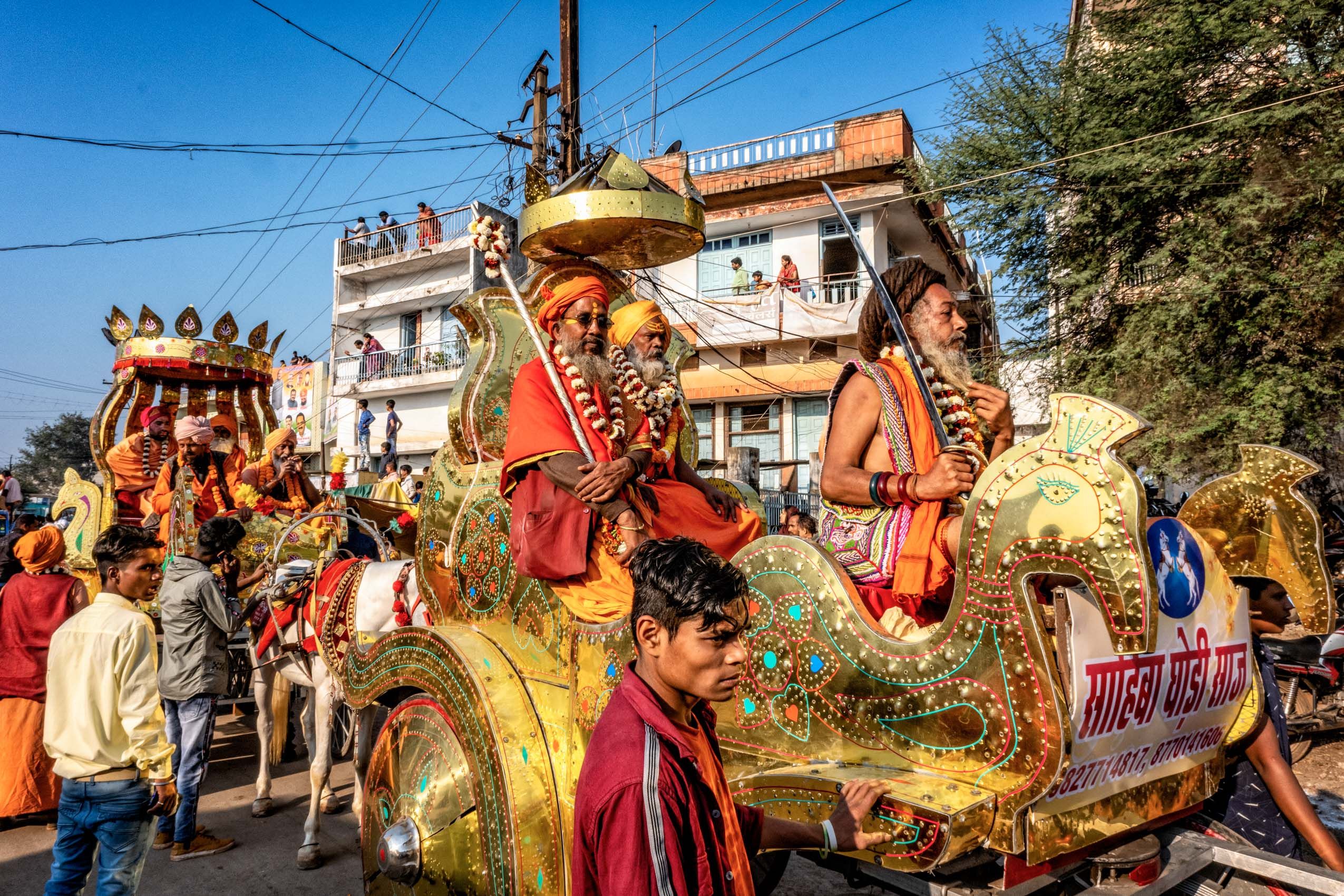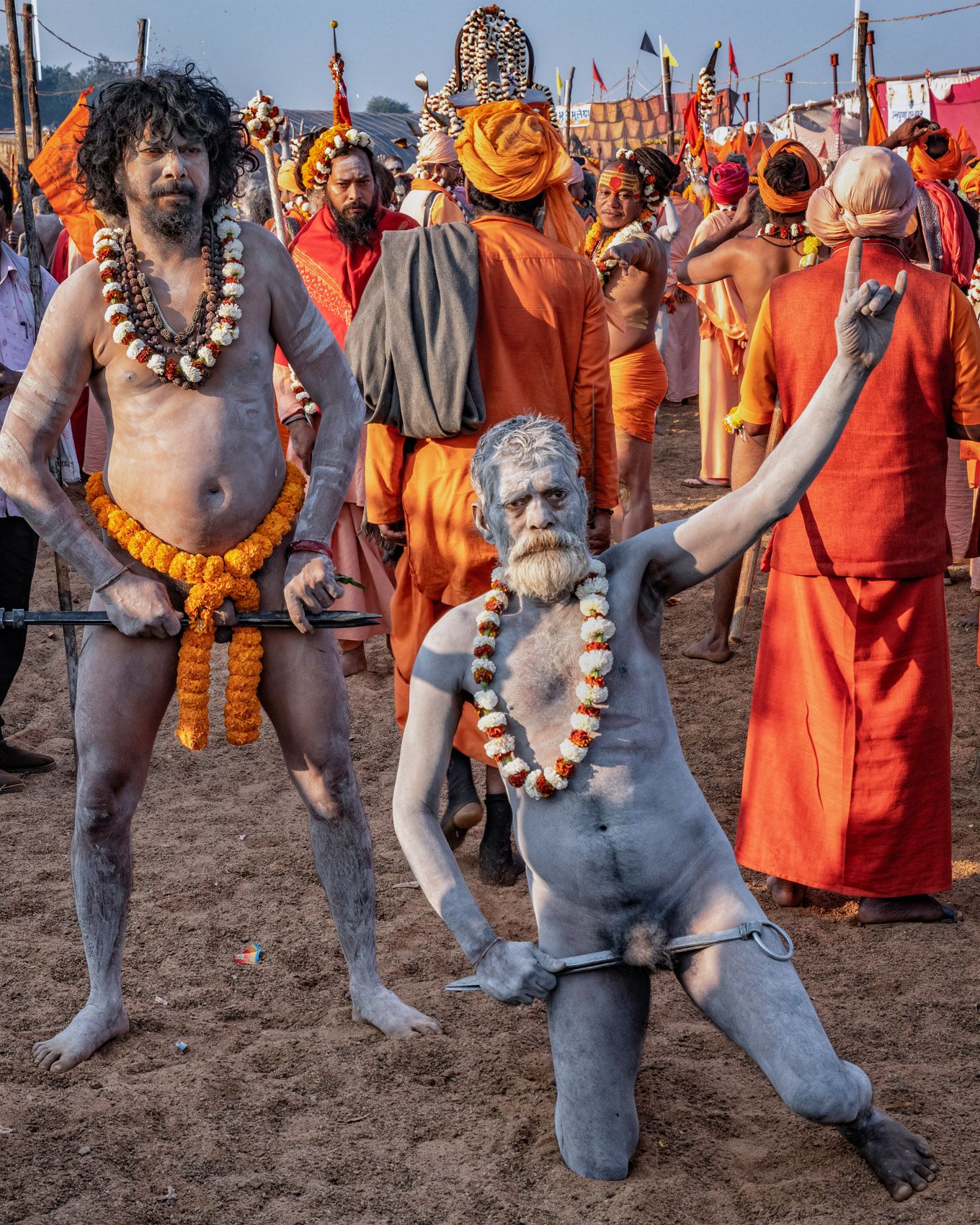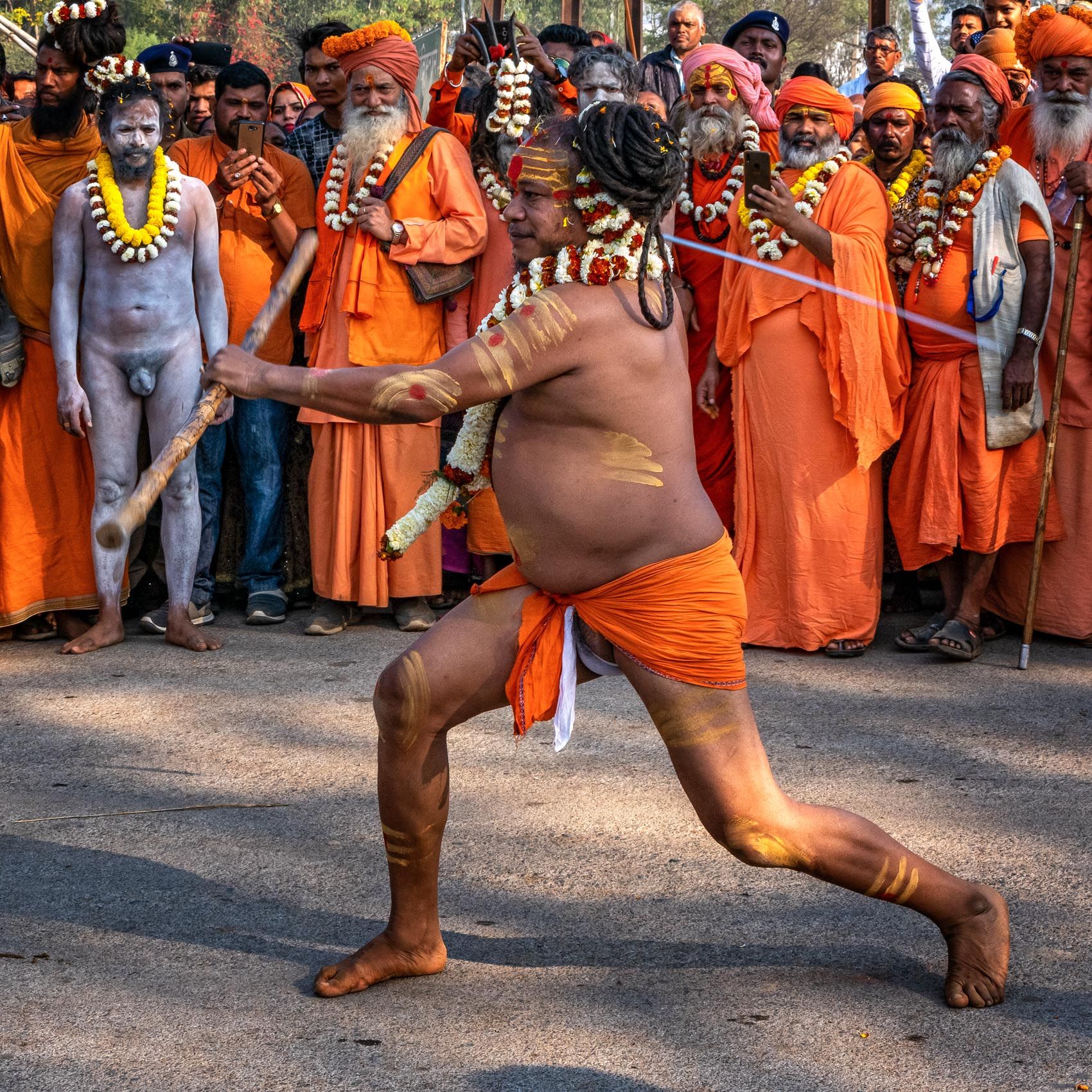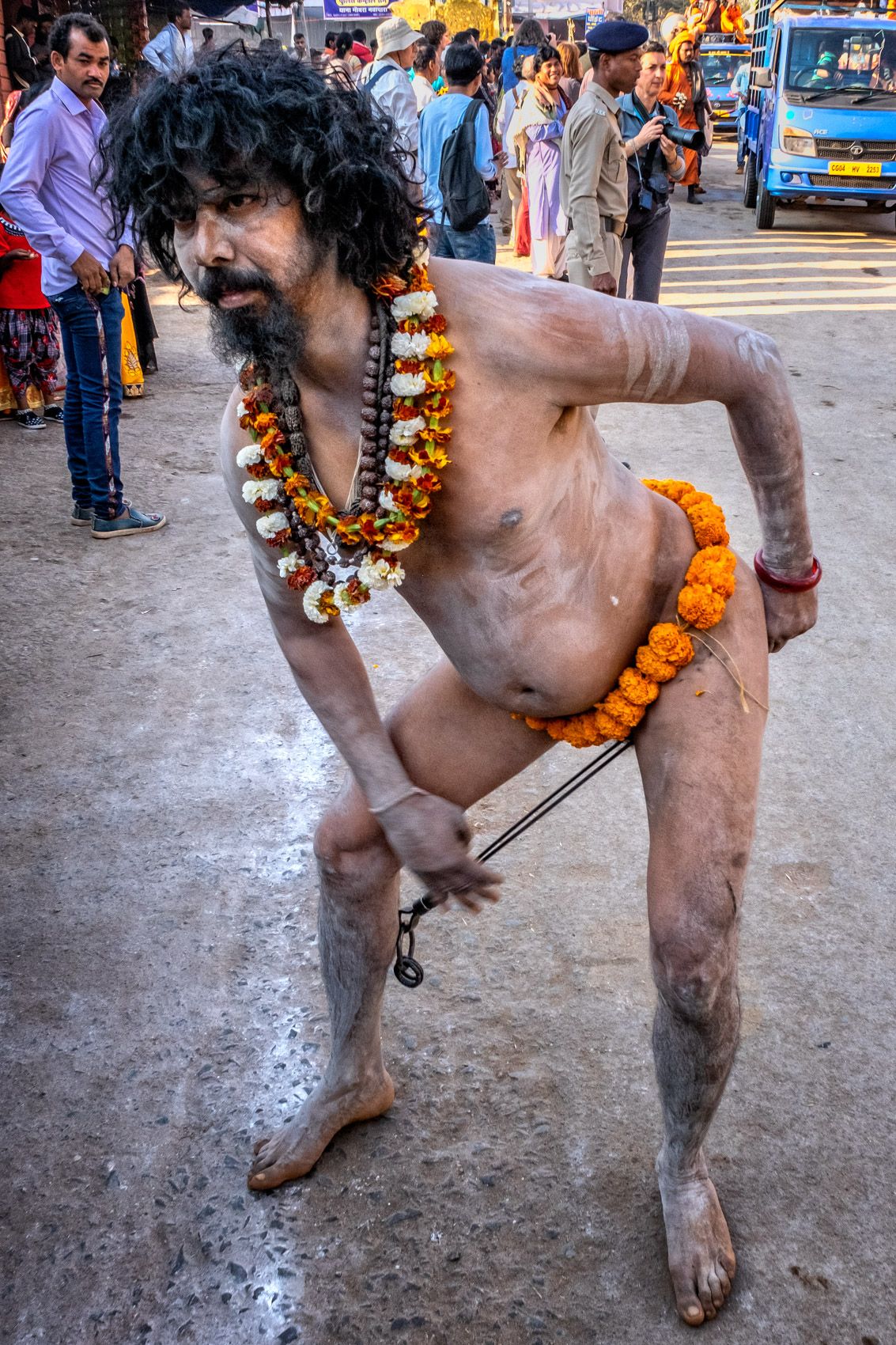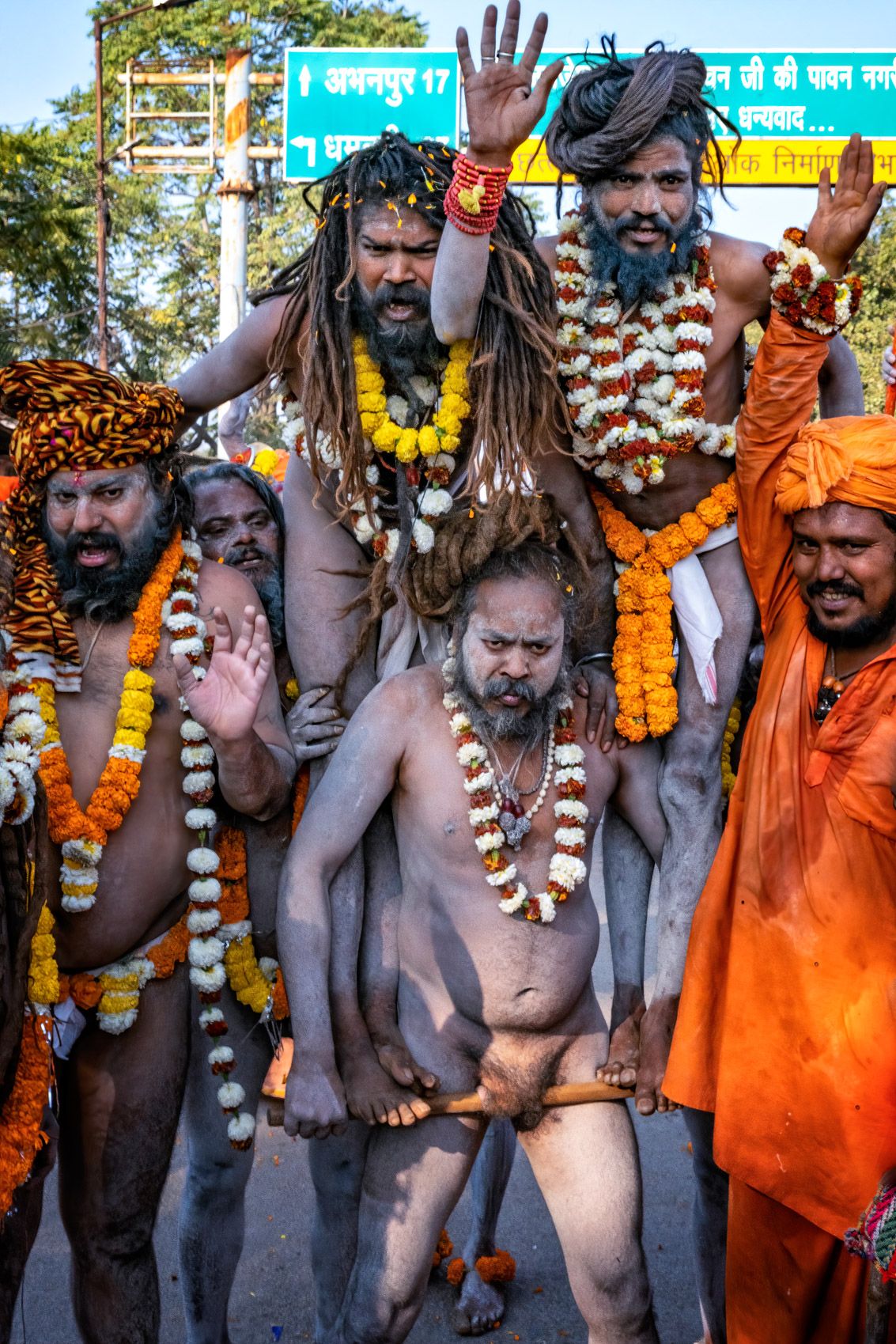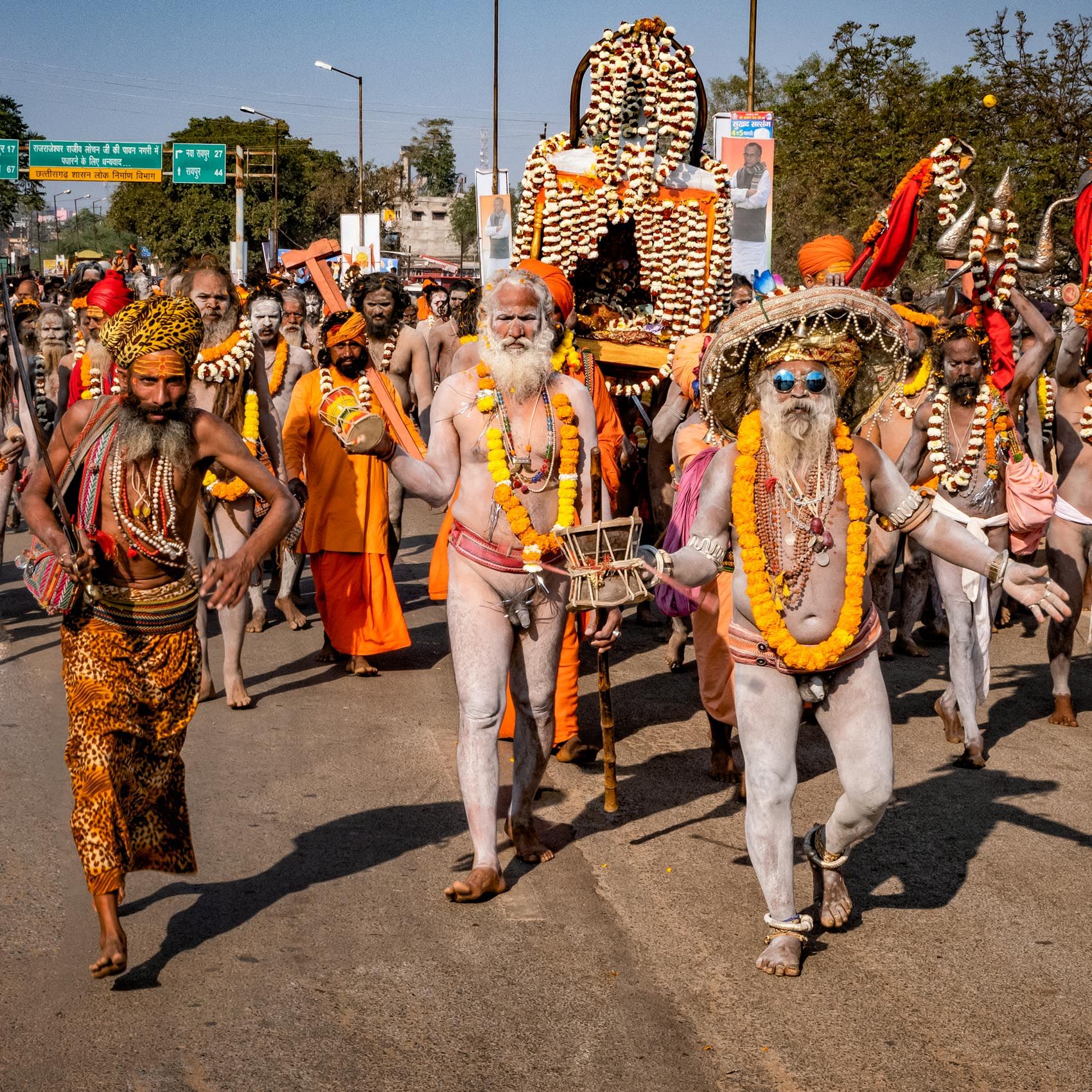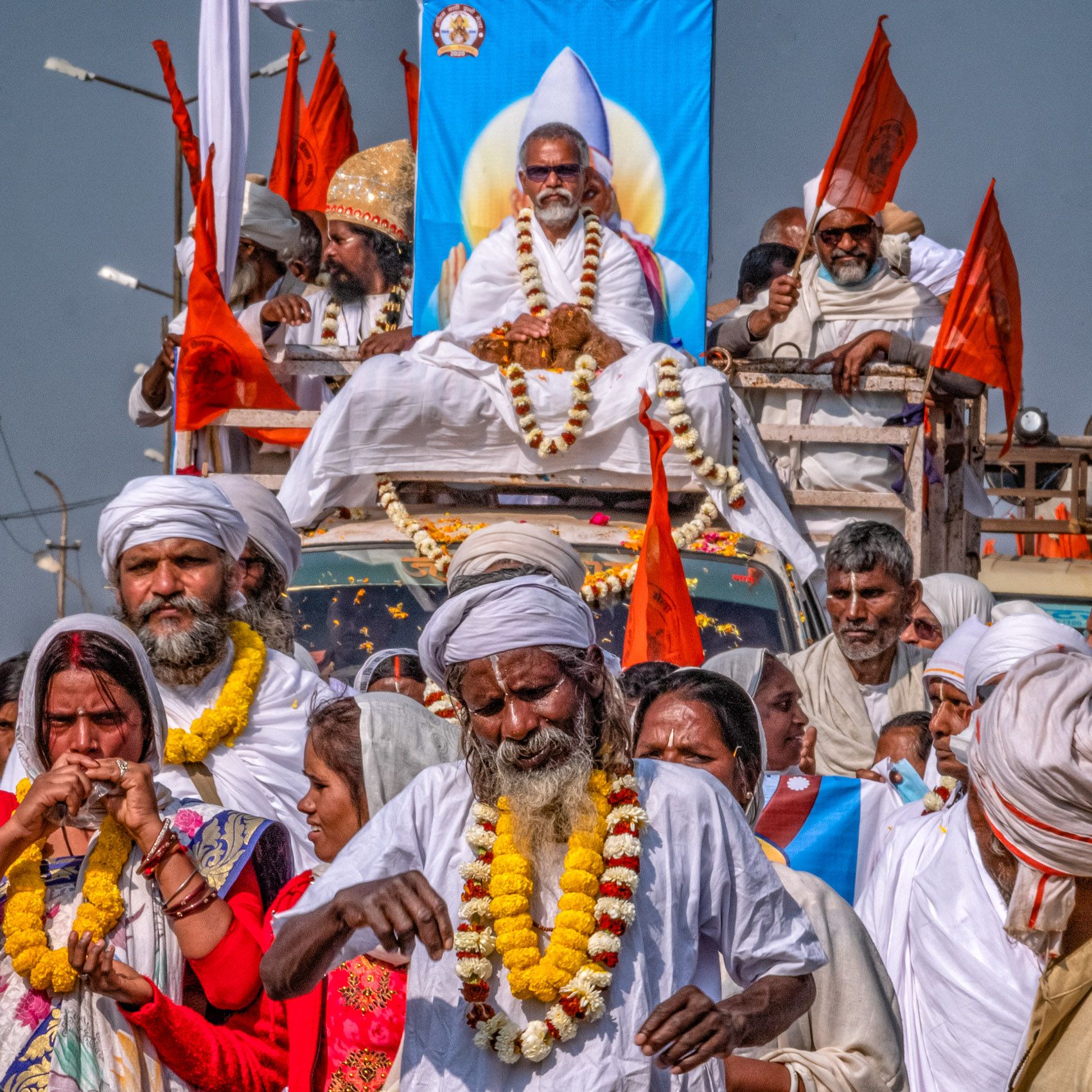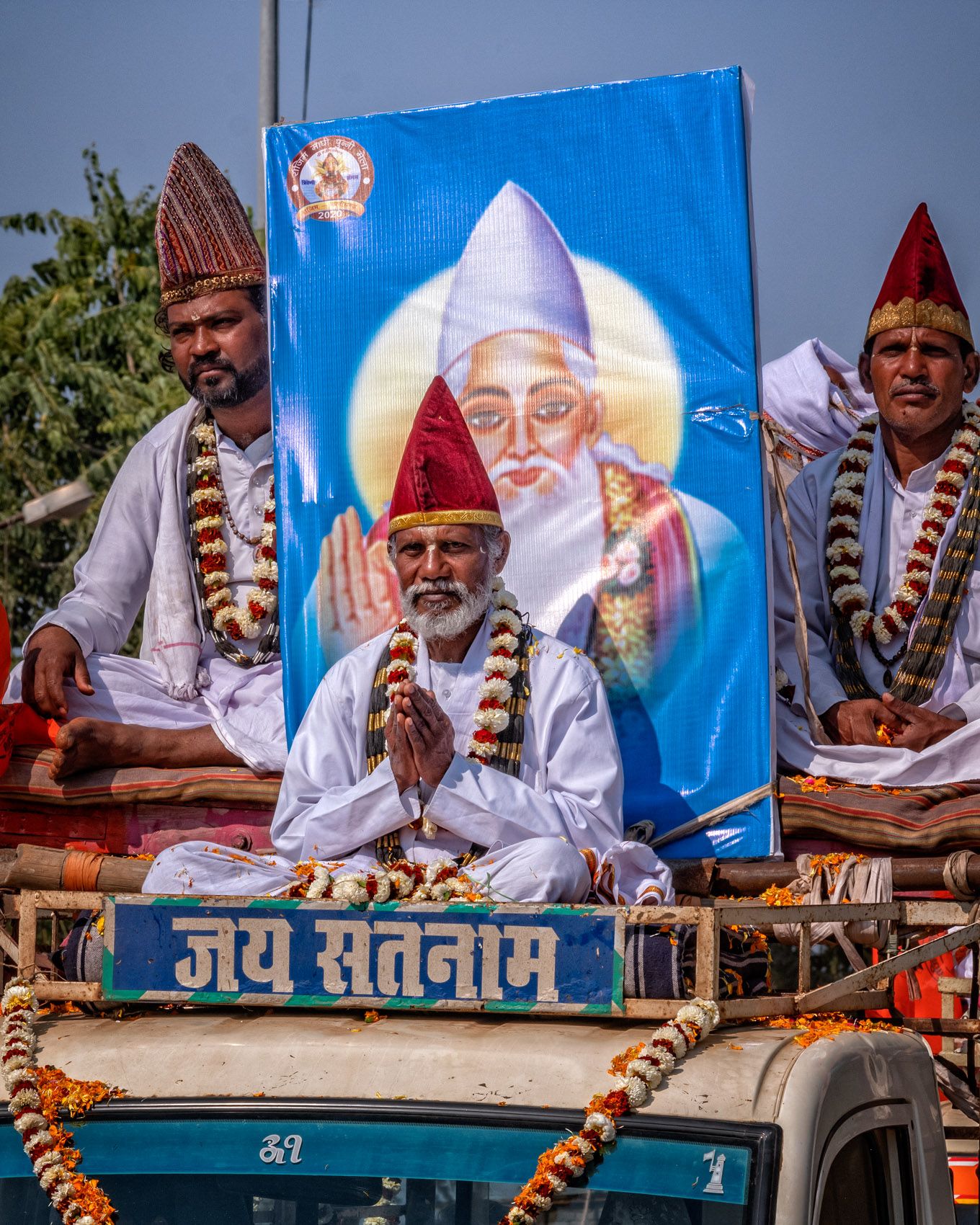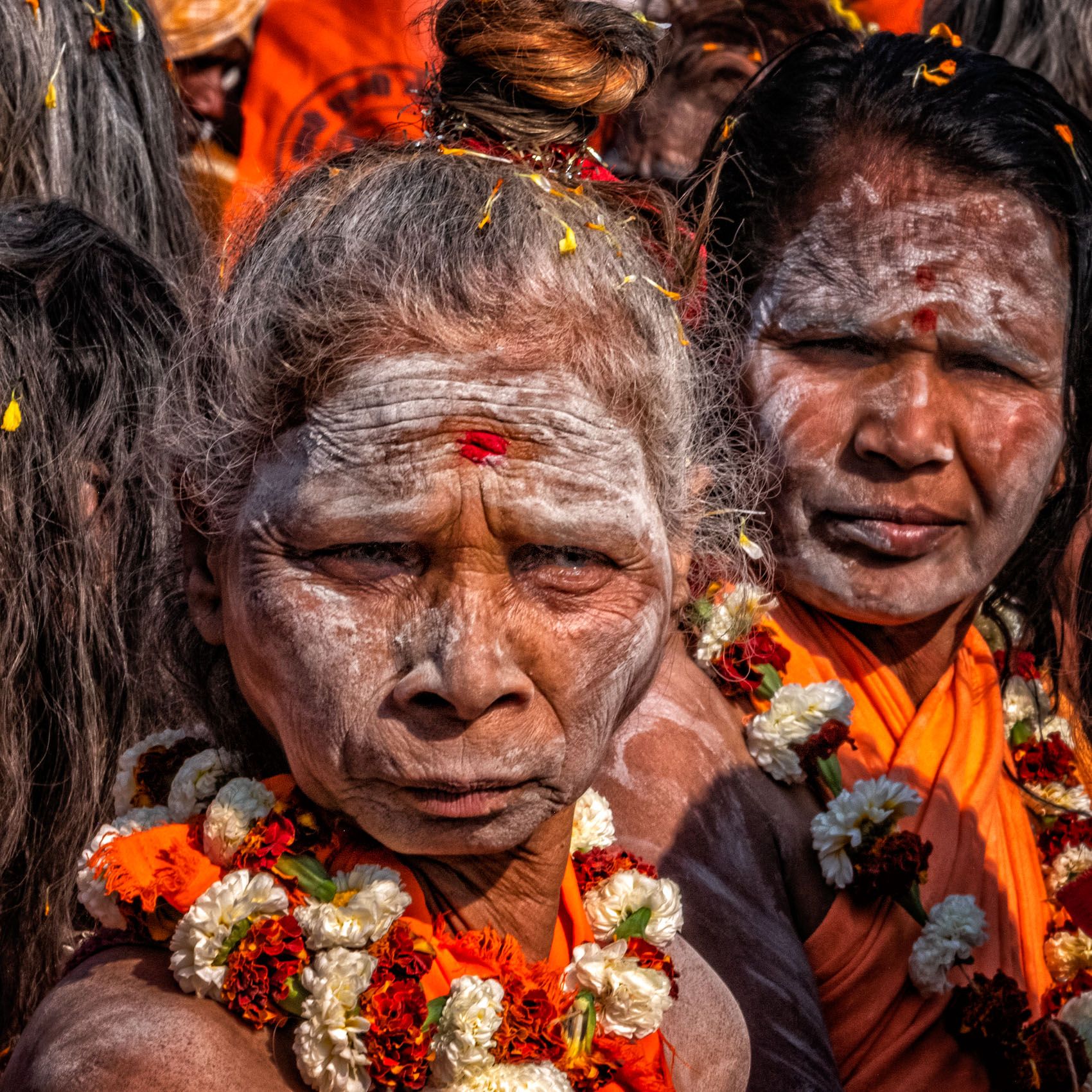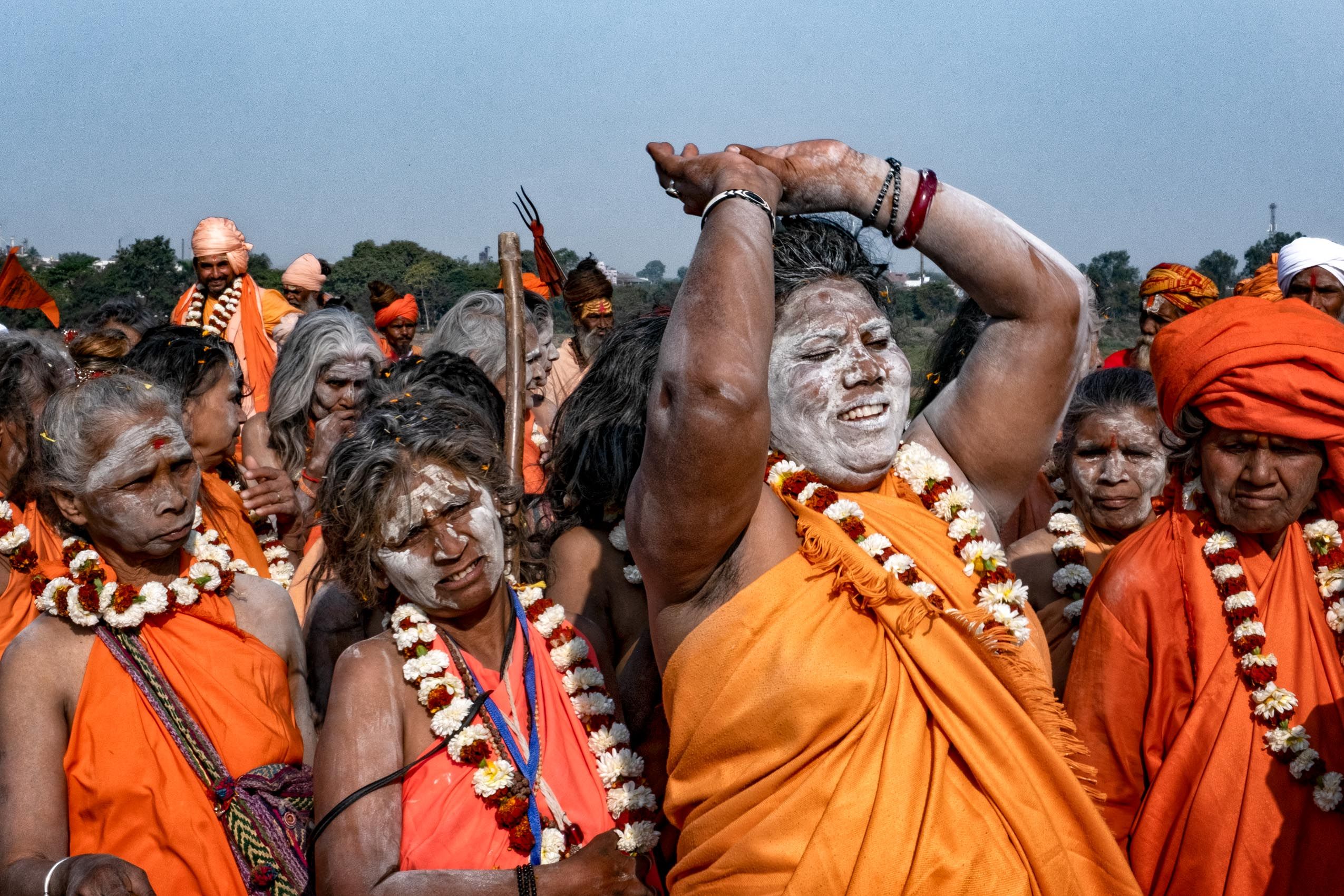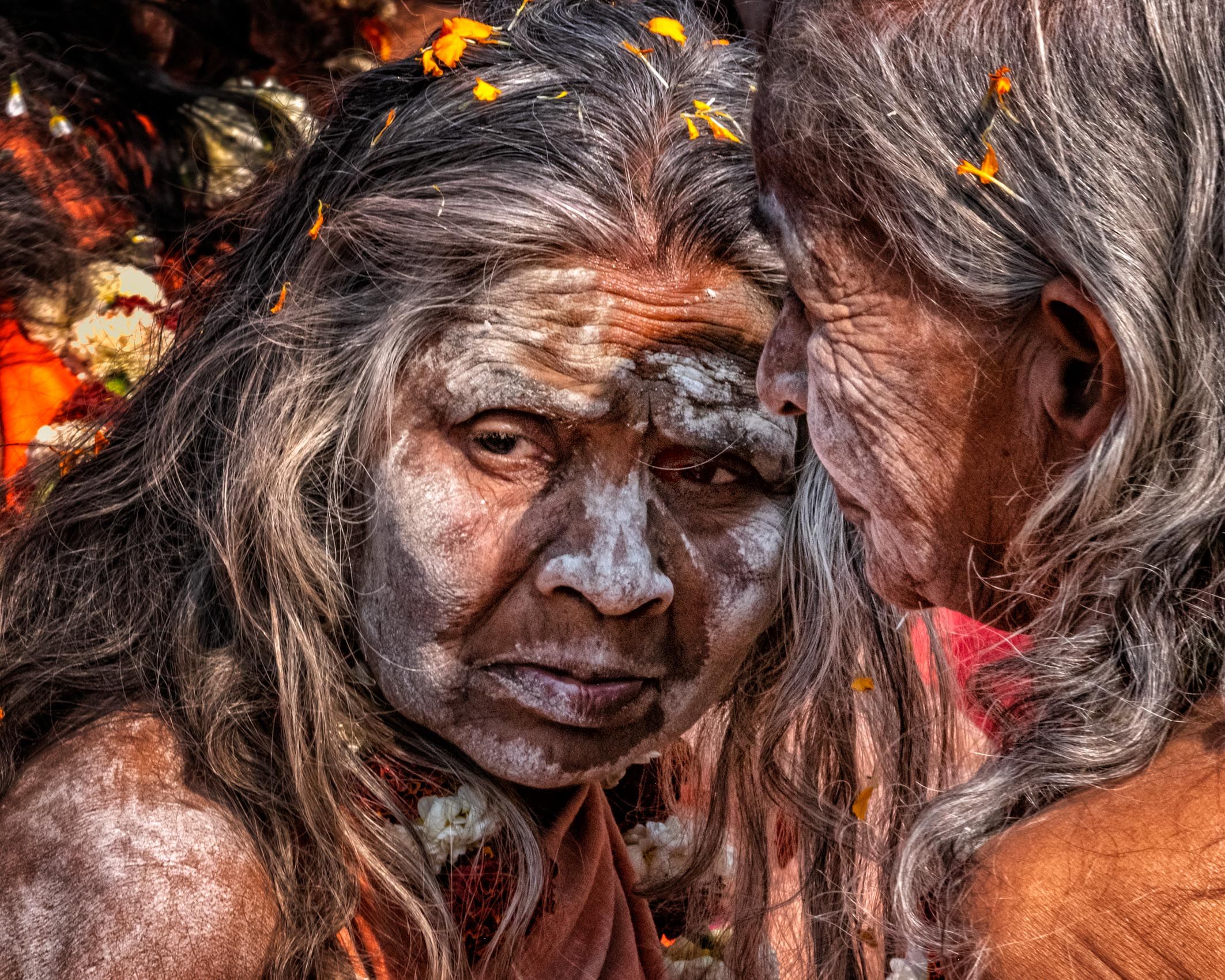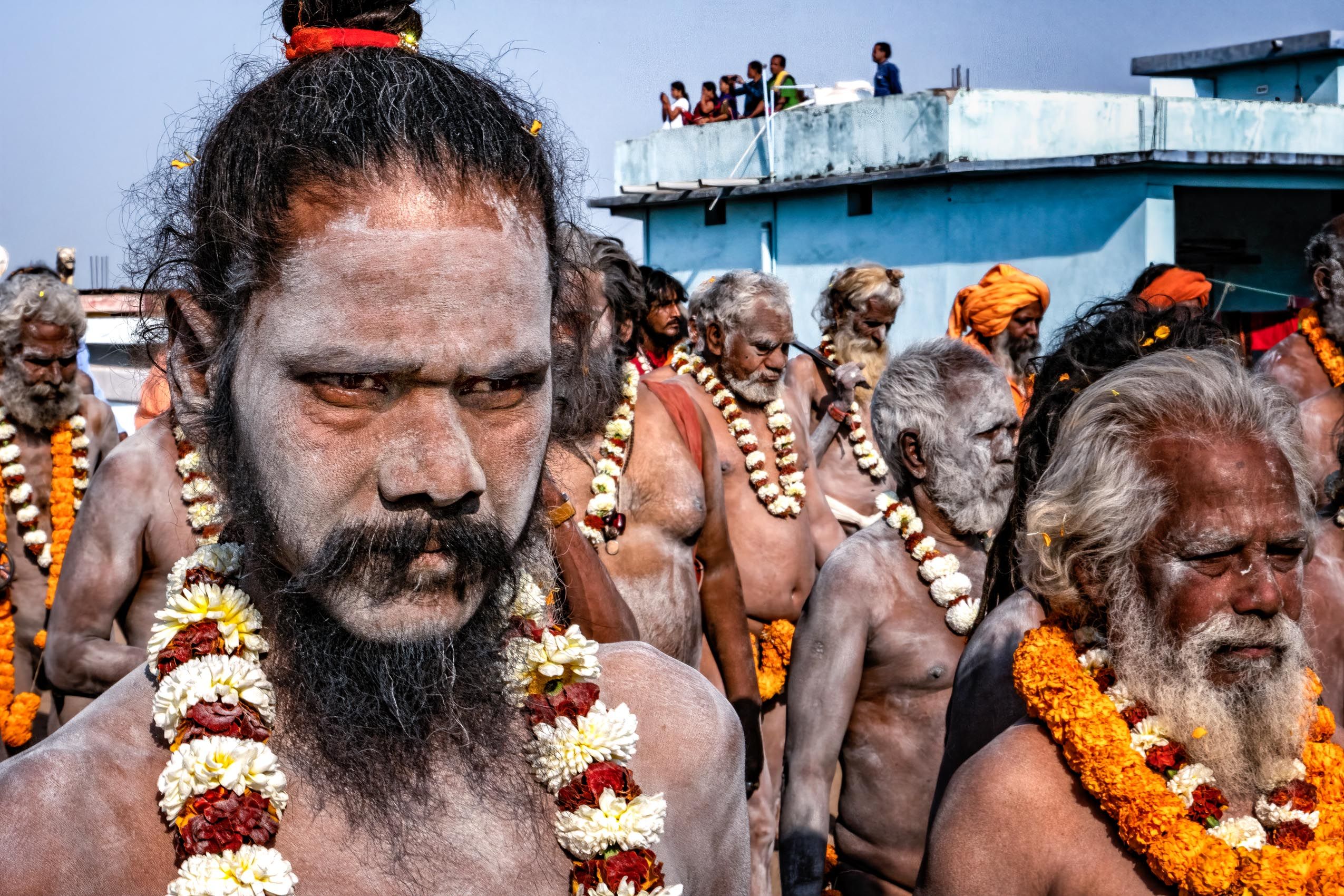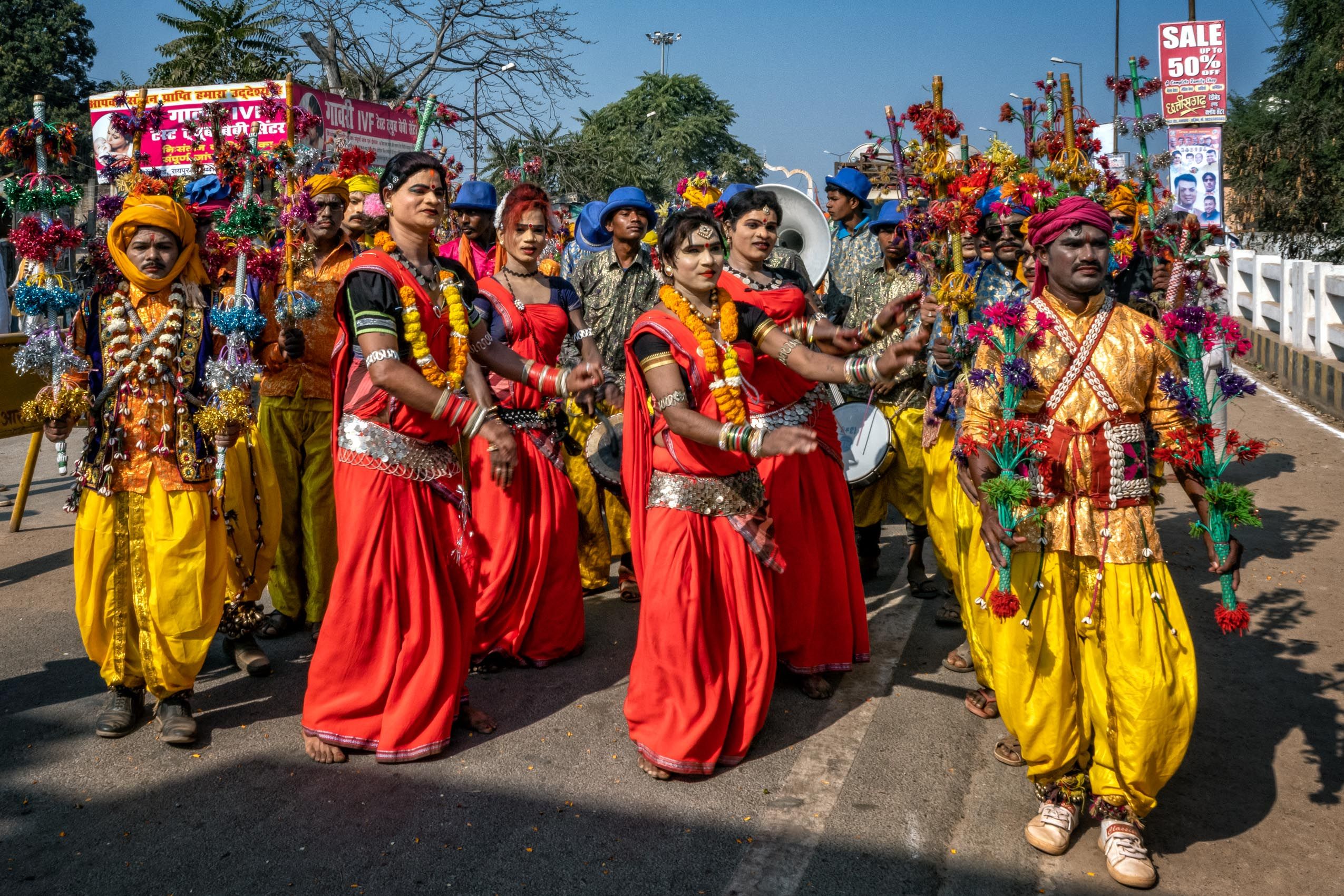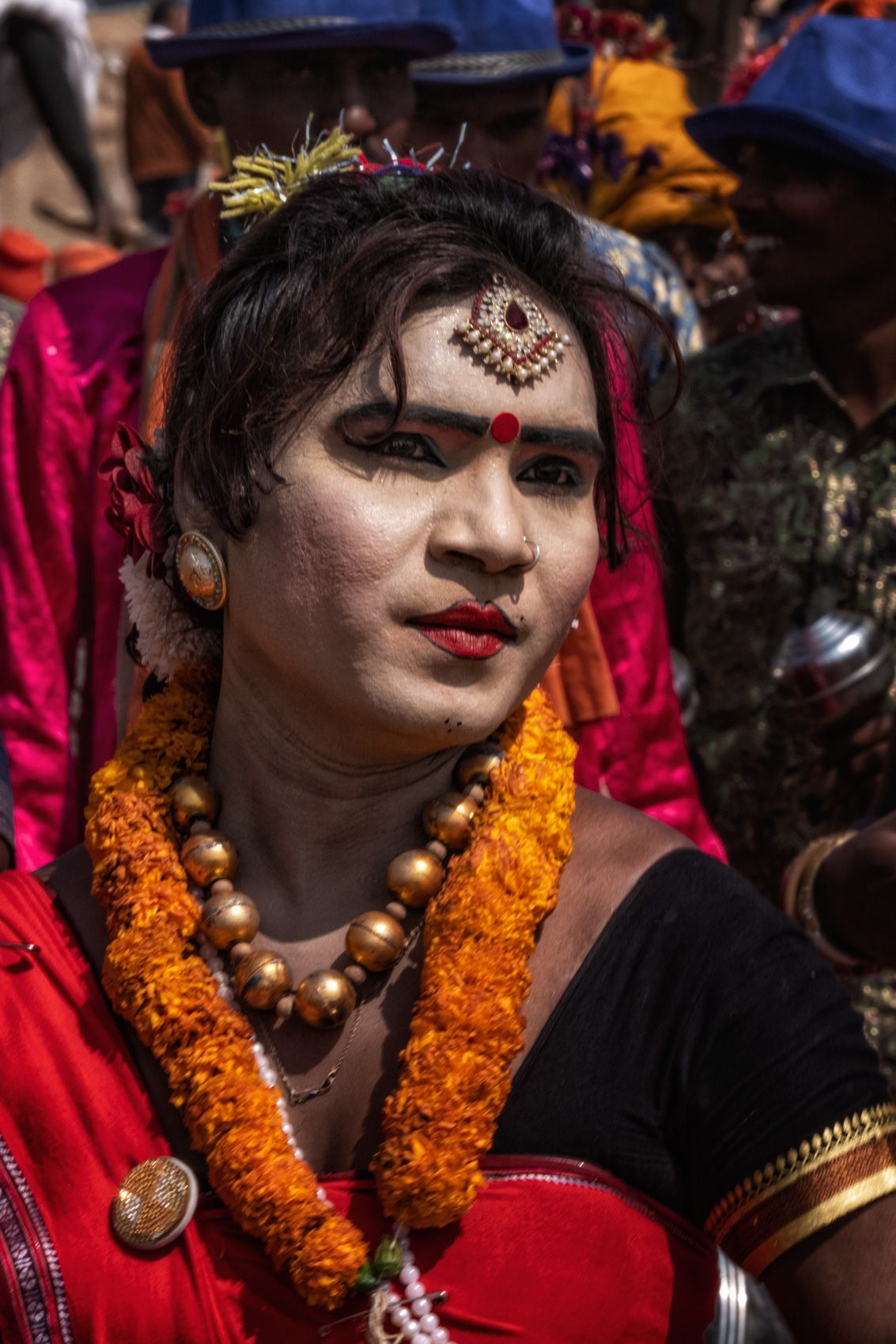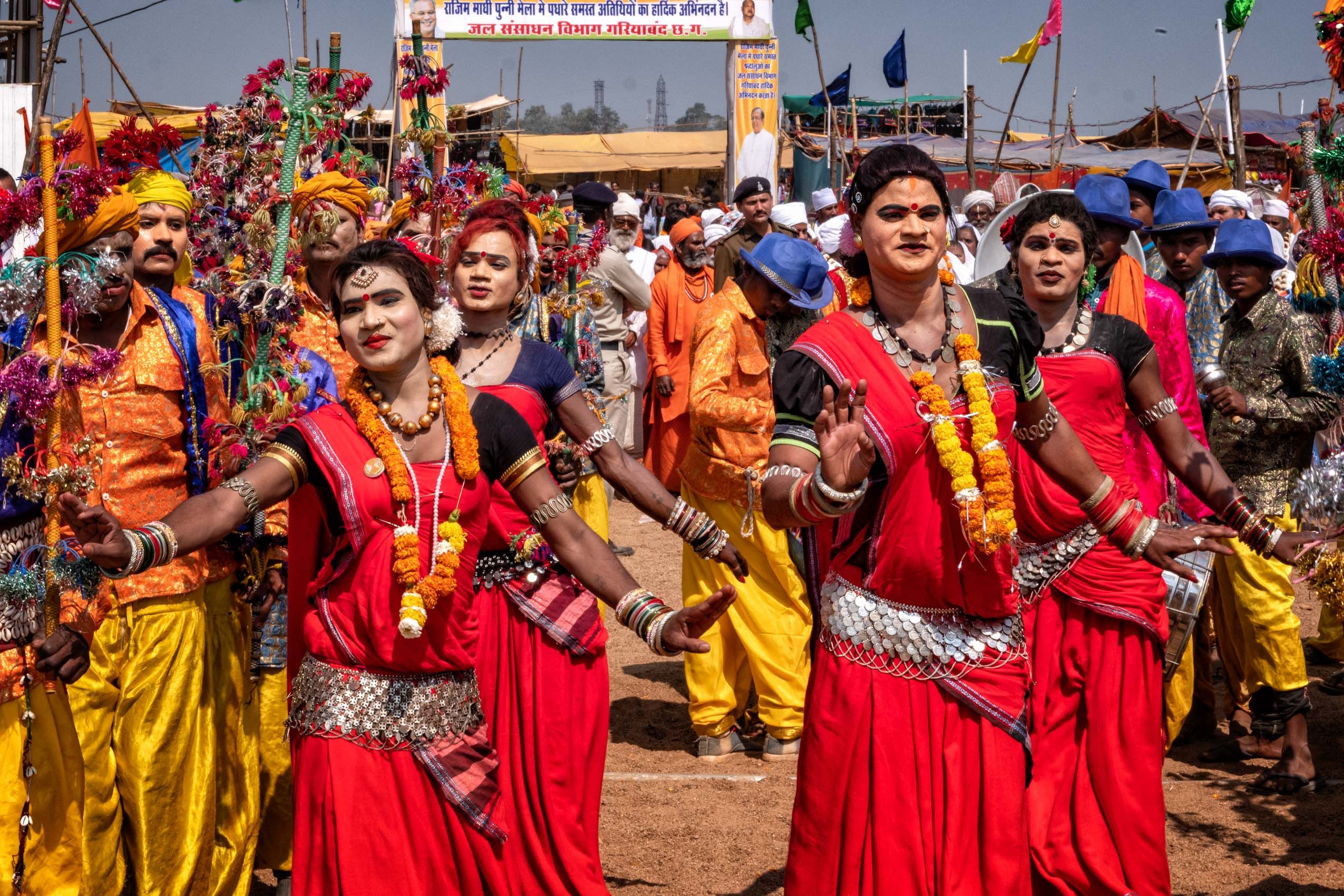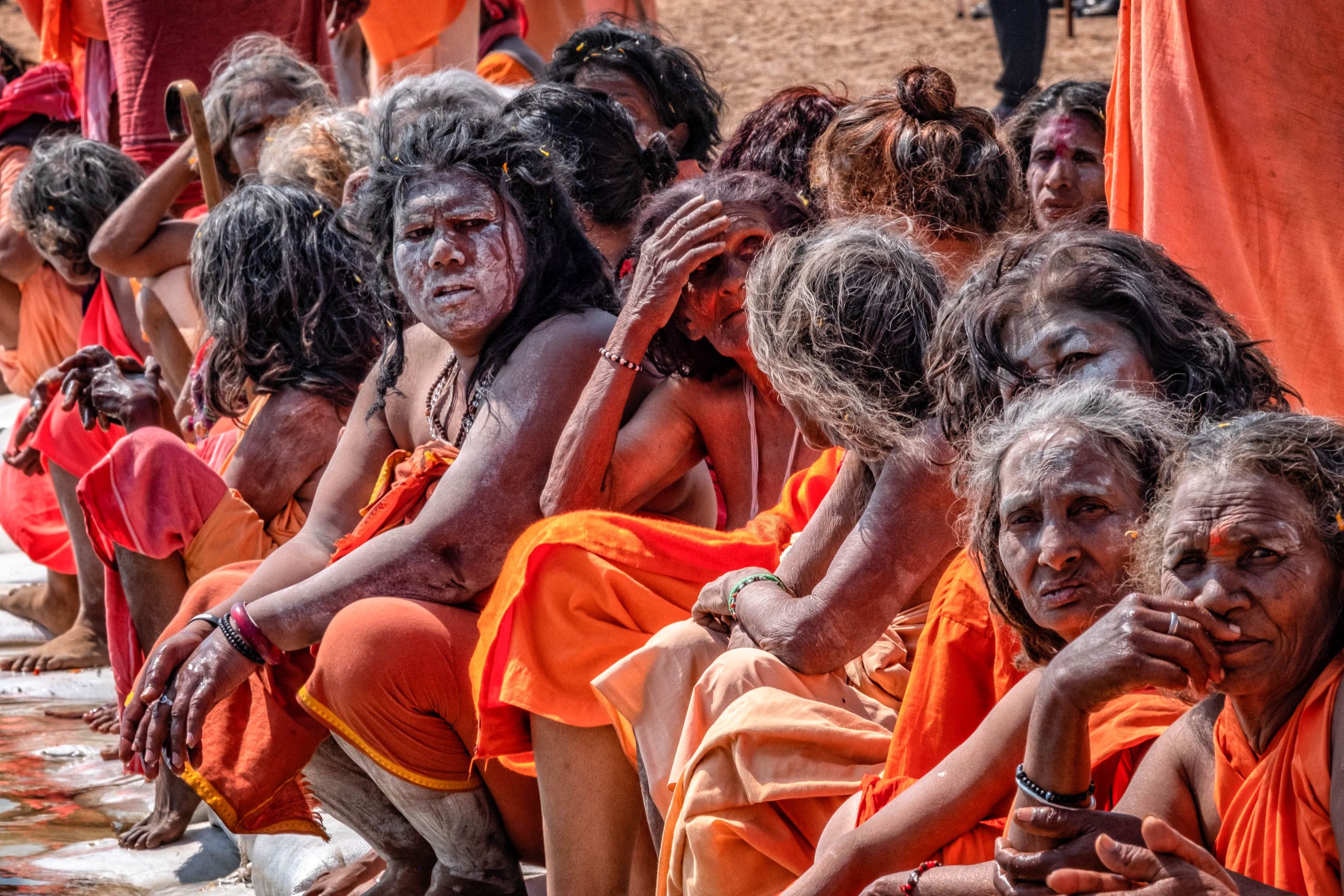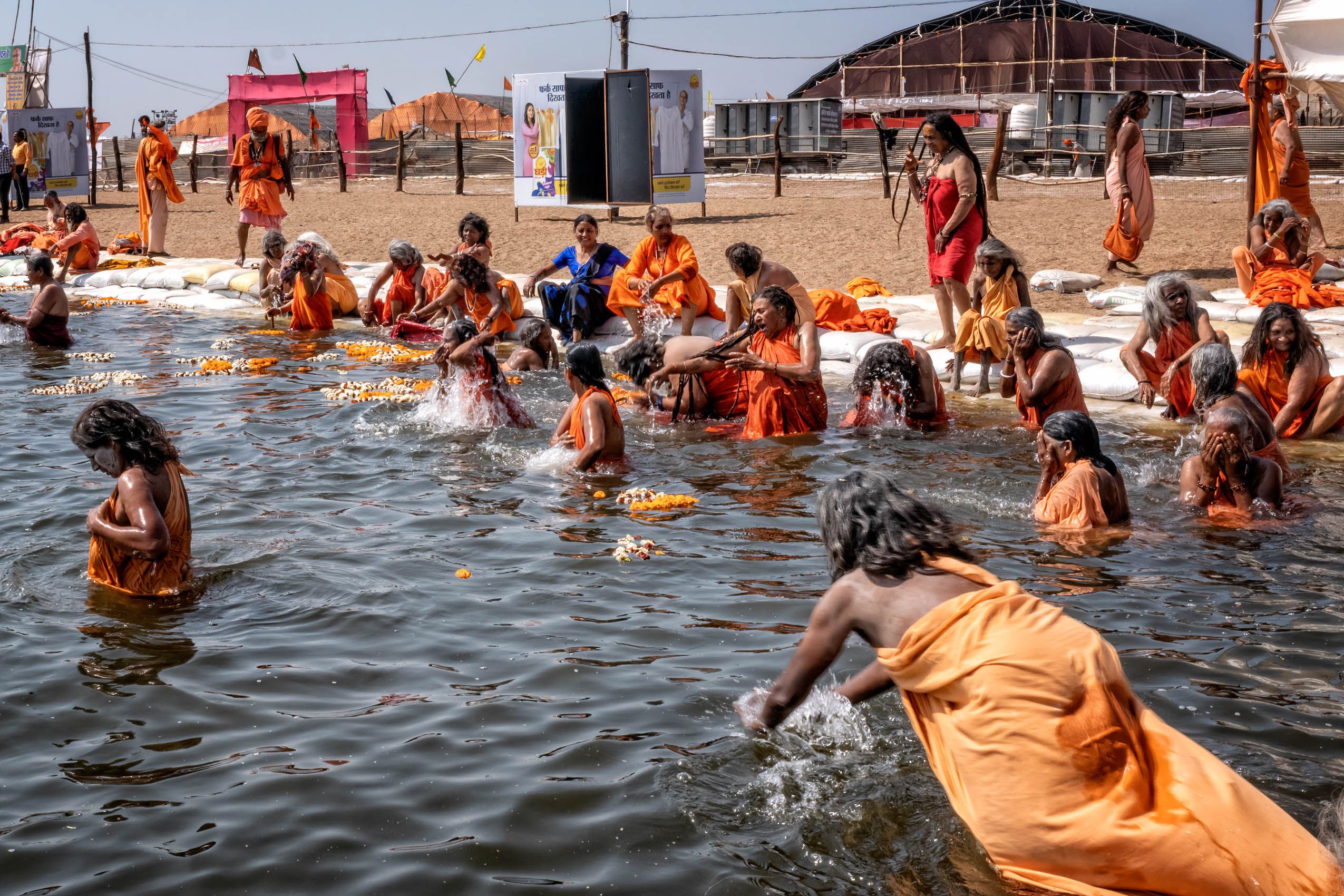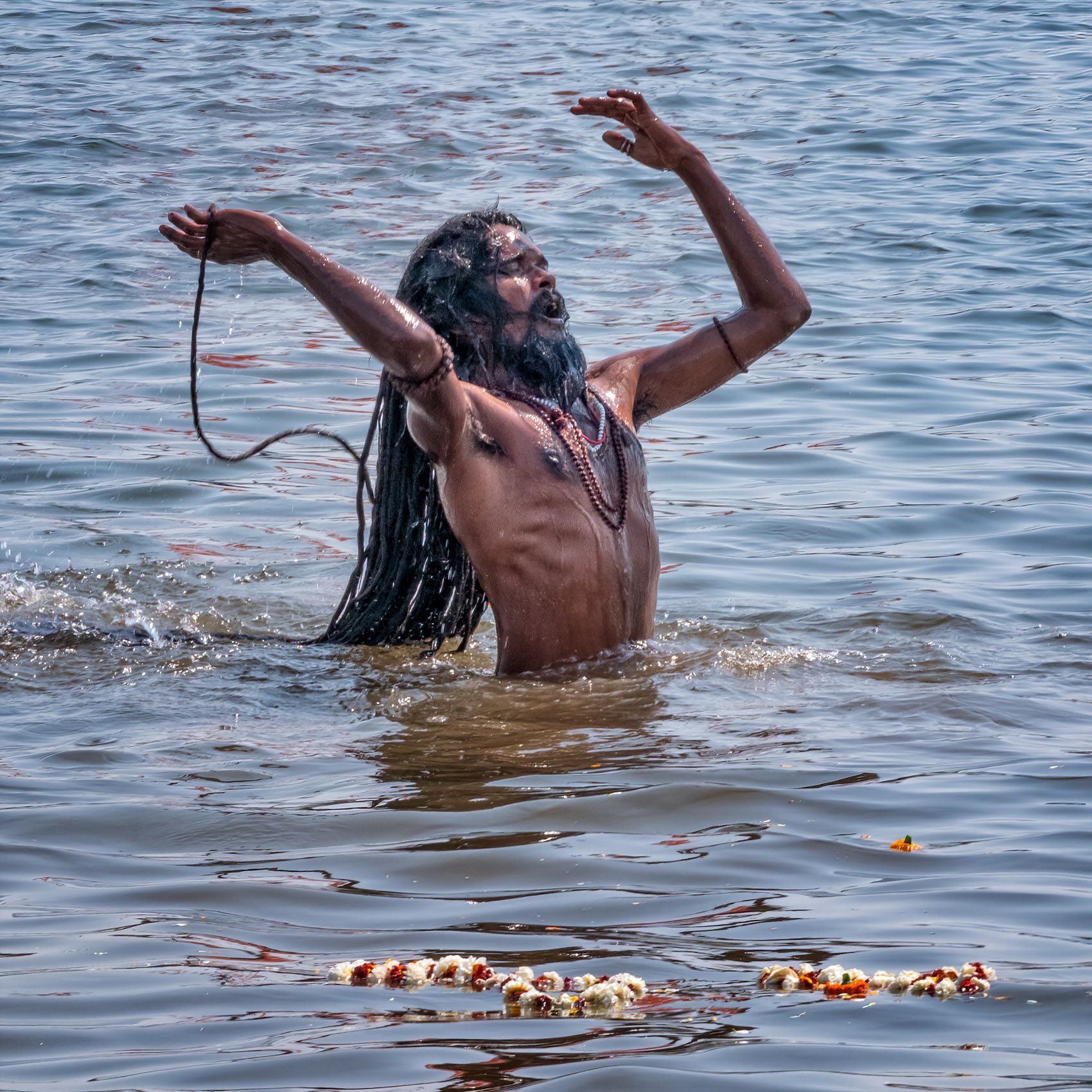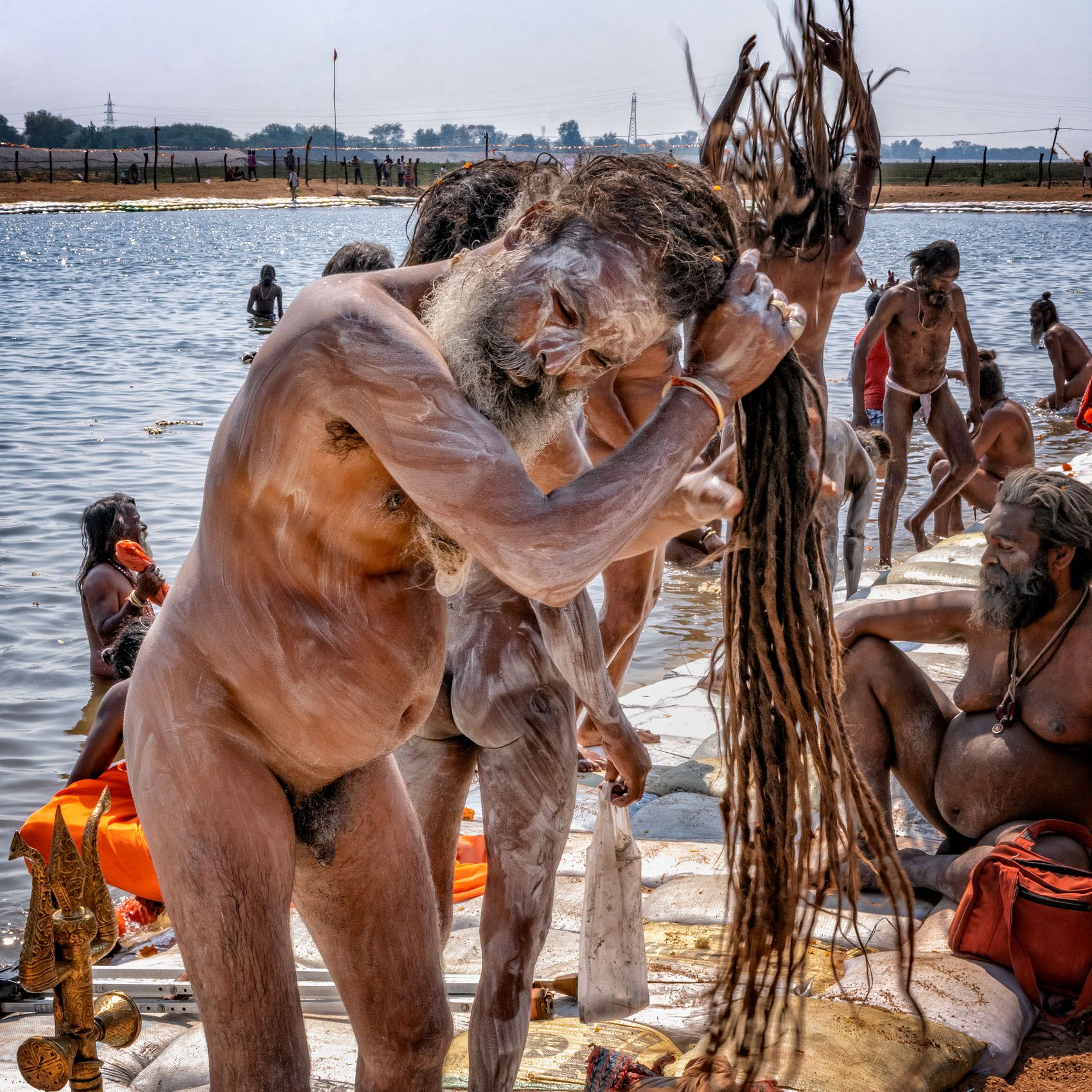Sadhus and Others at Chhattisgarh's Rajim Magha Punni Mela
The small town of Rajim in Chhattisgarh is the site of a major annual Hindu festival, formerly called the Rajim Kumbh Mela and now the Rajim Magha Punni Mela. Like the great Kumbh Mela at Allahabad, this one is auspiciously sited at a sangam, or confluence of rivers—in this case, the Mahanadi, Pari and Sodhur—where ritual bathing can take place; and two major Hindu temples in the area are a focus of devotions. The festival lasts for fifteen days, from the full moon day of Magha Purnima to the waning moon night of Maha Shivatri, particularly auspicious for devotees of Vishnu (Vaishnavites) and Shiva (Shaivites) respectively. As in most such Indian festivals, the religious dimension is interwoven with elements of commerce and entertainment, with much buying and selling of goods and refreshments and other elements typical of rural and traditional fairs and carnivals. In addition drawing local people and many from throughout the region, this mela or festival welcomes and accommodates large numbers of wandering Hindu holy men and women (sadhus and sadhvis)—including the naked and ash covered naga sadhus—as well as various gurus and lay religious groups. All of these can be seen resting, bathing and processing in the images here. Also part of the long procession are a quartet of transsexuals (hijras), who constitute a recognised third gender in India with distinct cultural roles. Here they dance to the accompaniment of their own suitably attired hired band



















